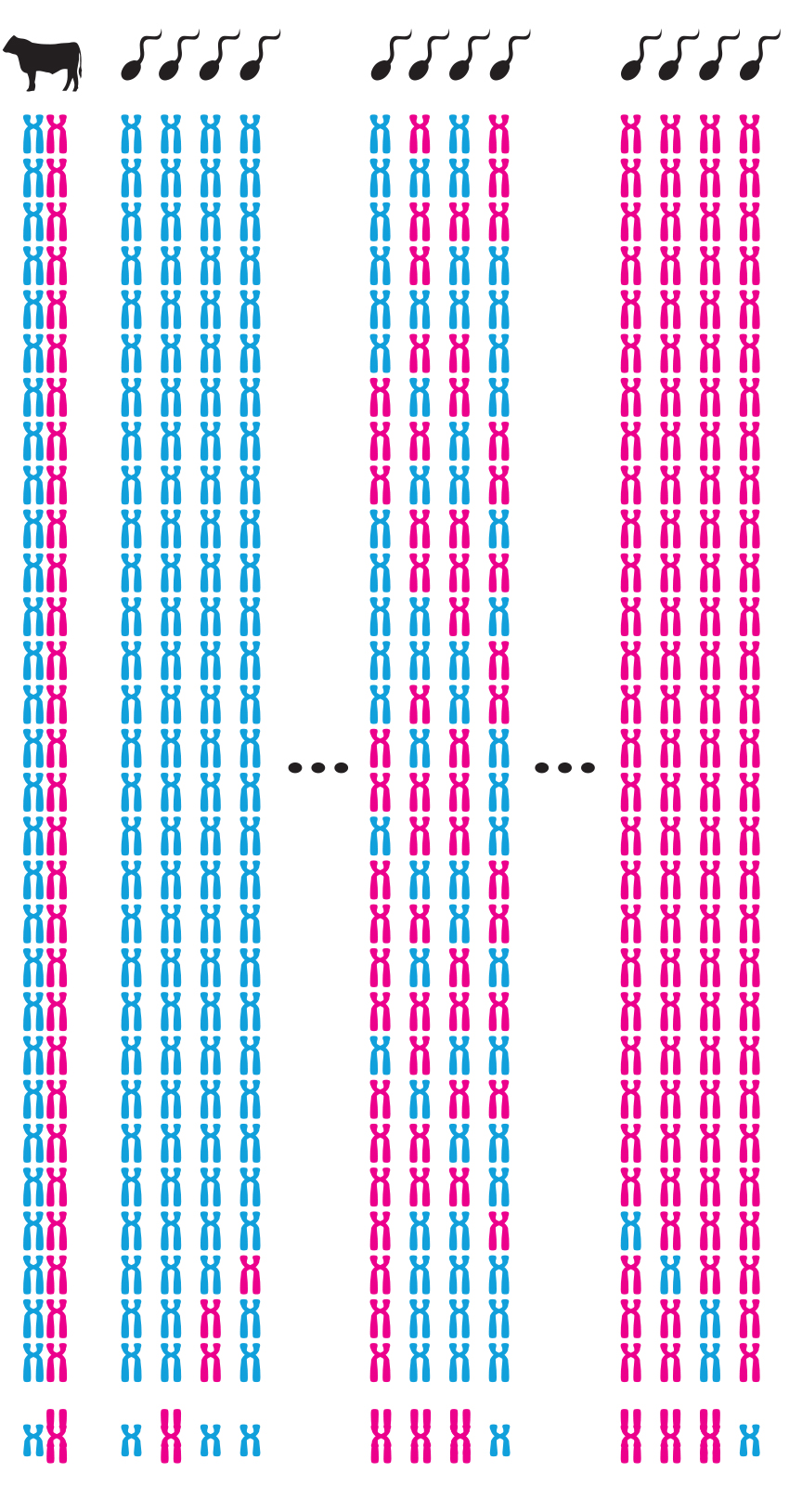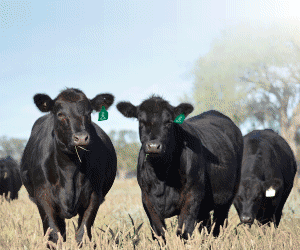Understanding the inheritance of genes
To understand the value of genomic selection, one must first understand how genes are inherited from one generation to the next.
- When an animal reproduces (e.g. a sperm is created) 1 chromosome from each chromosome pair is selected at random and passed onto the progeny.
- As cattle’s DNA consists of 30 chromosome pairs, the selection of chromosomes that is passed on is equivalent to flipping a coin 30 times, with a different combination of heads/tails returned each time.
- There are 1,073,741,824 possible chromosome combinations that a sire can pass onto his progeny. This number ignores the recombination process where segments of the paternal and maternal chromosomes are exchanged prior to the creation of reproductive (sperm/egg) cells.
- The manner in which chromosomes are inherited is referred to as mendelian sampling and means that the genes passed on in no two sperm are exactly alike.
- The same number of possible combinations is true for each egg produced by a dam, meaning the number of possible chromosome combinations inherited by animals from their parents is in the billions. Think about the variation observed in full-sibling brothers and sisters.
- Genomic technology provides an insight into the chromosome segments that an animal has inherited, rather than assuming all progeny have inherited the same genes from their parent (i.e. mid parent EBV).

An example of this is the differences observed between full siblings, including embryo siblings, whereby on occasion distinct similarities can be measured, however so can stark differences in their performance. This can be thought about similarly to people, where by two full siblings may have different characteristics around height, build, eye colour and hair colour yet have the same parents.






